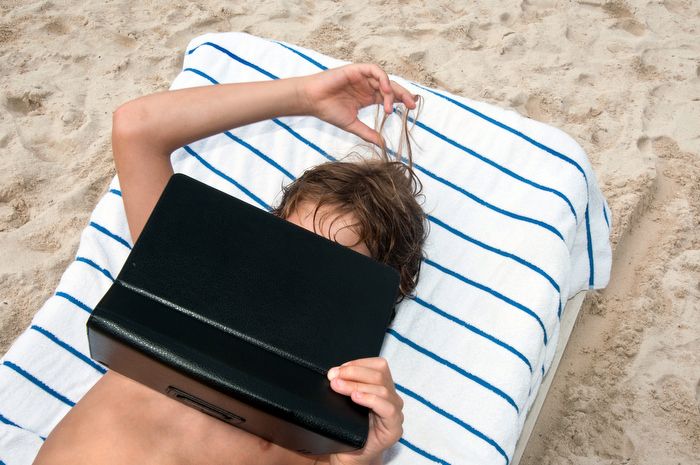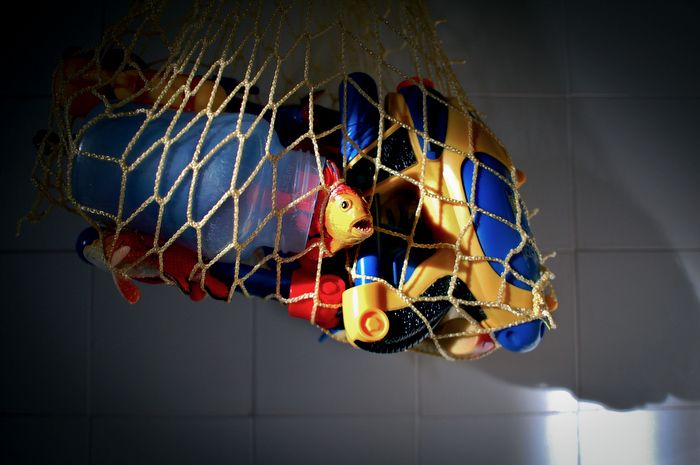blog
Interview with Featured Photographer Andi Schreiber
F-Stop: How did you first become involved in photography and what led to you choosing this as your profession?
AS: It’s funny to think about it but I don’t know if I chose photography or if it chose me. Although I’m consumed with making photographs and do photograph events I’m actually a full-time parent and an part-time “professional” photographer, editor and bookmaker. I think of myself as a documentary artist, which is how I explain what it is that I do when people ask. I fell into photography somewhat accidentally when in college. I was enrolled at the University of Michigan’s School of Art intending to study graphic design. I saw an ad seeking photographers to work at The Michigan Daily, U-M’s student run newspaper. I had little interest in journalism but wanted to photograph for the Daily’s fashion supplements. I wound up photographing a wide range of assignments at the university and around Ann Arbor. When it was time to graduate I had to stick with newspaper work because I didn’t have any other marketable skills after four years of art school. I was a newspaper staff photographer in Boston and then a photo editor in New York City for many years but I was always pursuing personal photo projects on the side.
F-Stop: How did this project “WonderLust” come about?
AS: WonderLust is a sensory inspired view of domesticity. When I first moved to the suburbs I had a newborn and a two year-old. I felt isolated and directionless being away from city life. Caring for babies, while a huge blessing, also had a way of zapping my creativity. Slowly, my motivation returned as my boys got bigger. Being that my background was in photojournalism I felt compelled to work on a classic story with a clear narrative. But it was hard to separate myself from my family’s needs and I hoped to find a photo story that was close to home. I stumbled upon Jessica Backhaus’s book, “What Still Remains,” and I was able to see that the commonplace was worthy as subject matter. In order to do this I had to let go of the need for a specific narrative and become attuned to what attracted me visually. The earliest of these photographs became the self-published book, Lush Light. WonderLust evolved from Lush Light and continues to be a way for me to respond viscerally to my surroundings. It’s through these photographs that I find my place within my family and that of a larger existence.
F-Stop: Has making these images of your your day to day life changed the way you think about the day to day or changed the way you experience life with your family?
AS: Making photographs close to home allows me to elevate my everyday experiences and the people who share them with me. There’s a series of photographs of my husband and younger son giving one another raspberries that are beyond precious to me. I posted these on my blog with my husband’s permission and since doing so he’s really come to love that sequence. Family life is so full of extreme highs and lows, change is constant. I’m glad there’s evidence of our time together as rich, unremarkable and sometimes ridiculous. But being the family documentarian also keeps me in a permanent state of hovering. I’m an insider and an outside simultaneously. I tend to walk this line and much of my work comes from an in-between place emotionally.
F-Stop: Can you discuss your process for making these images? Do you carry your camera around everywhere? How do you decide what to photograph? Do you intervene in events at all, ask people to hold still, or move to better light, or ask them to do something in particular?
AS: My photographic process is somewhat random and reactive. I tend to thrive on uncertainty. I don’t set up photographs but I may ask ask someone stay put as I race to grab my camera. Just the other day I missed a photograph of my older son reading the New York Times. The late afternoon light was beautiful but by the time I made it back downstairs the moment shifted and my husband was tickling his back. I photographed that interaction instead. While it may wind up in our family album it likely will not appear anywhere else. I record a lot of these in between moments in the hopes that an image will become more deeply felt. The role of editing is crucial as I try to define what my work is about.
I don’t carry a camera everywhere although I just bought a Fuji X100s and have be taking it places I wouldn’t carry a heavier DSLR. I like it very much but if I have a camera with me I can almost never relax. I’m always ON and eager to feel something. I find the act of making photographs to be a real rush. And if there’s a happy accident that occurs, all the better.
F-Stop: I noticed you have a pretty active blog, what role does this play in your creative process? Is this separate from your projects, is it a place to work out ideas?
AS: Blogging has been a very important part of my process. WonderLust (the blog) existed before there was a project. I use it as a place to work out ideas and experiment. Not everything posted on the blog has become a keeper in the portfolio sense but it’s been a good forum to create a dialogue around newer work. All of my work feels very interconnected and the blog has been a launch pad. I have another project that emerged from the blog and kind of surprised me. If I had to sequence all of my blog’s photographs together to create a mid-career retrospective (Hello Whitney Museum, are you listening?) it would all make perfect sense to me.
F-Stop: What photographers or other artists inspire you?
AS: I find inspiration in the work of both painters and photographers. Like many photographers, I’m inspired by Edward Hopper but I also have a fondness for Pierre Bonnard’s sense of color, light and space. His snapshot sense of composition is like nothing else. I love the raw brutality of Mark Cohen’s photographs and the poetic wanderings of Sylvia Plachy. Donna Ferrato is fierce and I admire her and her work immensely.
F-Stop: What is the best career advice you have ever received?
AS: Years ago, while I was still working as a newspaper photographer I took a weekend workshop with Larry Fink. He told us that attraction is proportionate to destiny. I took this advice to heart, really thought about my newspaper photography career and quit my job. This one comment really changed the course of my life and career path. It also gave me permission to seek pleasure in photography. I recently had the opportunity to share this story with Larry and he was very touched by it.
F-Stop: Are you working on any other projects currently?
AS: I have a series titled Pretty, Please which is interwoven with my domestic experience. It’s comprised mostly of self-portraits and is about feeling sexually inconsequential. It’s about losing the feeling of being needed at mid-life. I’m turning the camera on myself in to take stock as a chapter closes.
To see WonderLust on F-Stop: http://www.fstopmagazine.com/andischreiber.html
For more of Andi Schreiber’s work: http://www.andischreiber.com/
Location: Online Type: Featured Photographer, Interview
Events by Location
Post Categories
Tags
- Abstract
- Alternative process
- Architecture
- Artist Talk
- artistic residency
- Biennial
- Black and White
- Book Fair
- Car culture
- Charity
- Childhood
- Children
- Cities
- Collaboration
- Community
- Cyanotype
- Documentary
- Environment
- Event
- Exhibition
- Faith
- Family
- Fashion
- Festival
- Film Review
- Food
- Friendship
- FStop20th
- Gender
- Gun Culture
- Habitat
- Hom
- home
- journal
- Landscapes
- Lecture
- Love
- Masculinity
- Mental Health
- Migration
- Museums
- Music
- Nature
- Night
- nuclear
- p
- photographic residency
- Photomontage
- Plants
- Podcast
- Portraits
- Prairies
- Religion
- River
- Still Life
- Street Photography
- Tourism
- UFO
- Water
- Zine





Leave a Reply